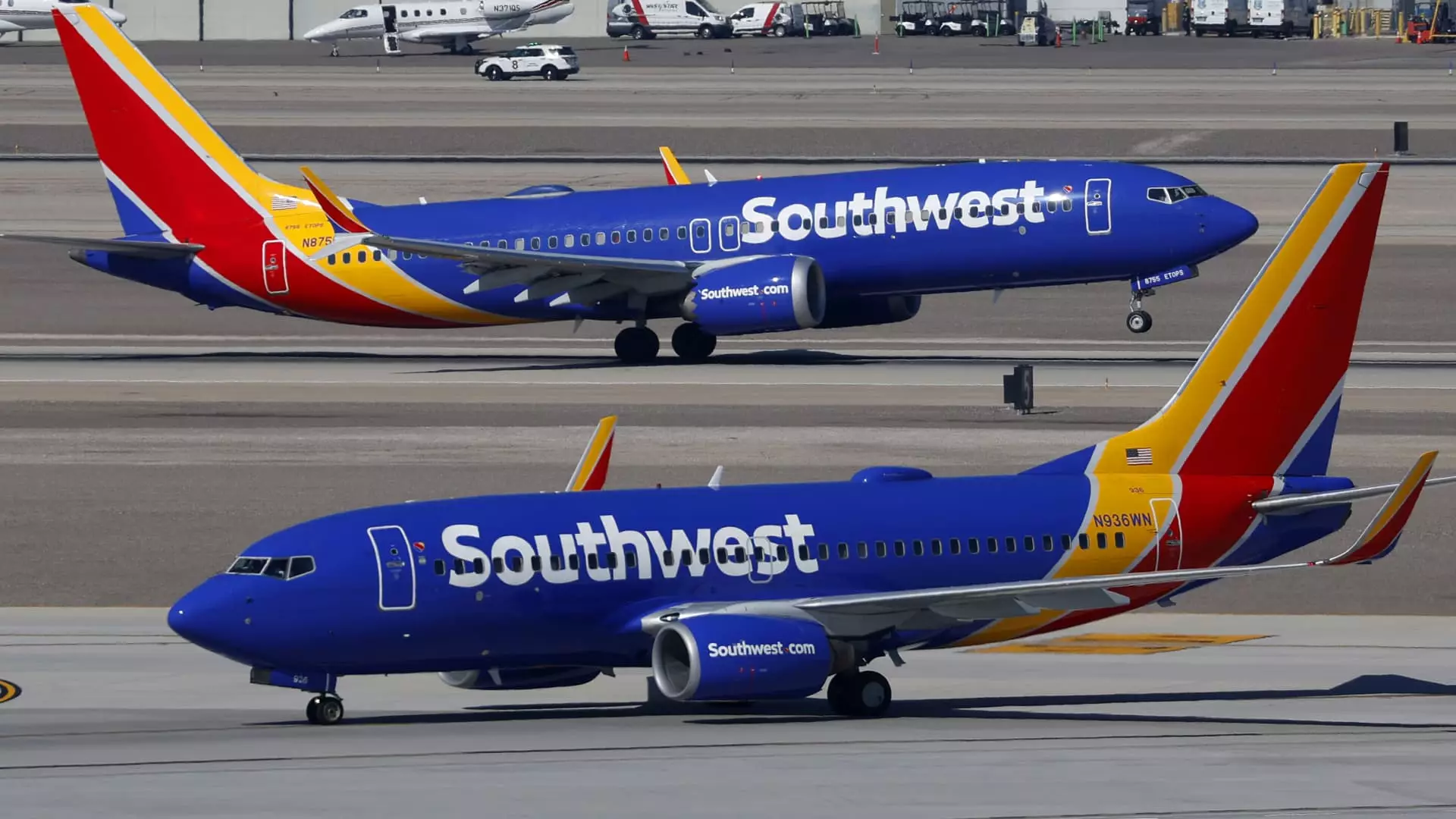For over five decades, Southwest Airlines has stood out in the crowded skies by defying conventional airline policies with its open seating approach. Passengers cherished the freedom to choose their seats upon boarding, creating a unique boarding culture that fostered spontaneity and personal control. However, the recent announcement that Southwest will shift to assigned seating starting January 27 marks a dramatic departure from this long-standing tradition. While this move aligns with broader industry trends and operational efficiencies, it also risks alienating a dedicated customer base accustomed to the airline’s unique selling point. The decision signifies more than just a logistical change; it embodies a broader strategic recalibration aimed at bolstering revenue streams.
This transition is not taken lightly by Southwest’s leadership, who clearly see the elimination of open seating as necessary in the fiercely competitive landscape where profitability and operational efficiency reign supreme. Yet, from the customers’ perspective, this represents a loss of agency—what was once an American airline renegade ethos now conforms to the standard model. It’s a shift that raises questions about whether Southwest’s brand identity will survive intact or become just another player in a saturated market.
Strategic Rethink: Introducing Tiered Boarding and Ancillary Revenue
Southwest’s move is intertwined with their broader overhaul of the business model, reflecting a strategic pivot to maximize incremental revenues. Since announcing the change, the airline has also rolled out new fare categories and additional bag fees, directly challenging their historical reputation of free checked bags. Top-tier customers are somewhat shielded from these policies, but the essence remains: Southwest aims to generate an additional $800 million this year alone in EBIT, with projections soaring to $1.7 billion by 2026.
This reflects a clear recognition that the airline must evolve or risk being outpaced by more diversified, profit-focused competitors like Delta and American. By implementing tiered boarding groups based on customer loyalty, spending habits, and fare class, Southwest is layering its boarding process with a strategic hierarchy. While this may streamline boarding and increase revenue from ancillary sales, it undermines the egalitarian experience that defined Southwest for decades. The new boarding order, which favors high-spenders and loyalty members, could potentially create feelings of exclusion among casual travelers, fueling resentment and diminishing overall customer satisfaction.
The Cost of Efficiency: Risks and Rewards
From an operational perspective, the move to assigned seating and tiered boarding has been carefully tested through computer models and live experiments. The aim is to prevent the chaos typically associated with assigned seats and to maintain turnaround times without sacrificing efficiency. However, efficiency often comes at a human cost: the loss of the communal, unstructured boarding experience. The once lively scramble for seats will give way to a more regimented process, arguably diminishing the spontaneity and camaraderie unique to Southwest flights.
Critics will argue that this change stifles the airline’s culture, which thrived on unpredictability and customer control. Moreover, imposing seat assignments might lead to increased ancillary revenue through seat selection fees, but it could also diminish the initial appeal that drew customers to Southwest in the first place—a sense of freedom. For many loyal passengers, particularly families and those who valued seat selection as part of their travel experience, this could be the beginning of a slowdown in customer loyalty and brand differentiation.
### Final Reflection
Southwest Airlines’ decision to eliminate open seating signals a significant strategic shift rooted in financial necessity rather than customer-centric innovation. While the pursuit of higher revenue is understandable, it is not without substantial risks. The airline’s brand identity—built on flexibility, affordability, and a rebellious spirit—faces potential erosion. Whether these changes propel Southwest forward or push it into a more generic, less differentiated space remains to be seen. As the aviation industry continues to evolve, Southwest’s gamble will ultimately test if profit motives can coexist with the core values that initially set it apart.

